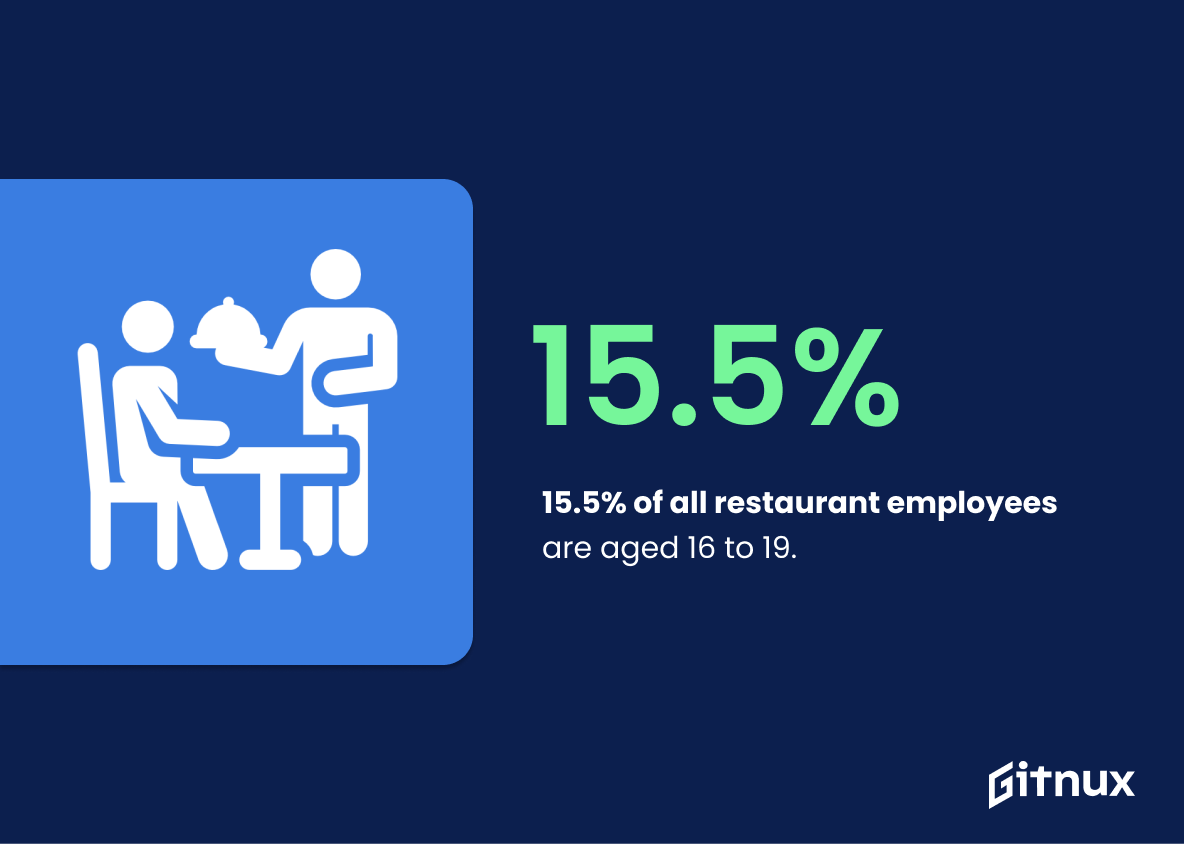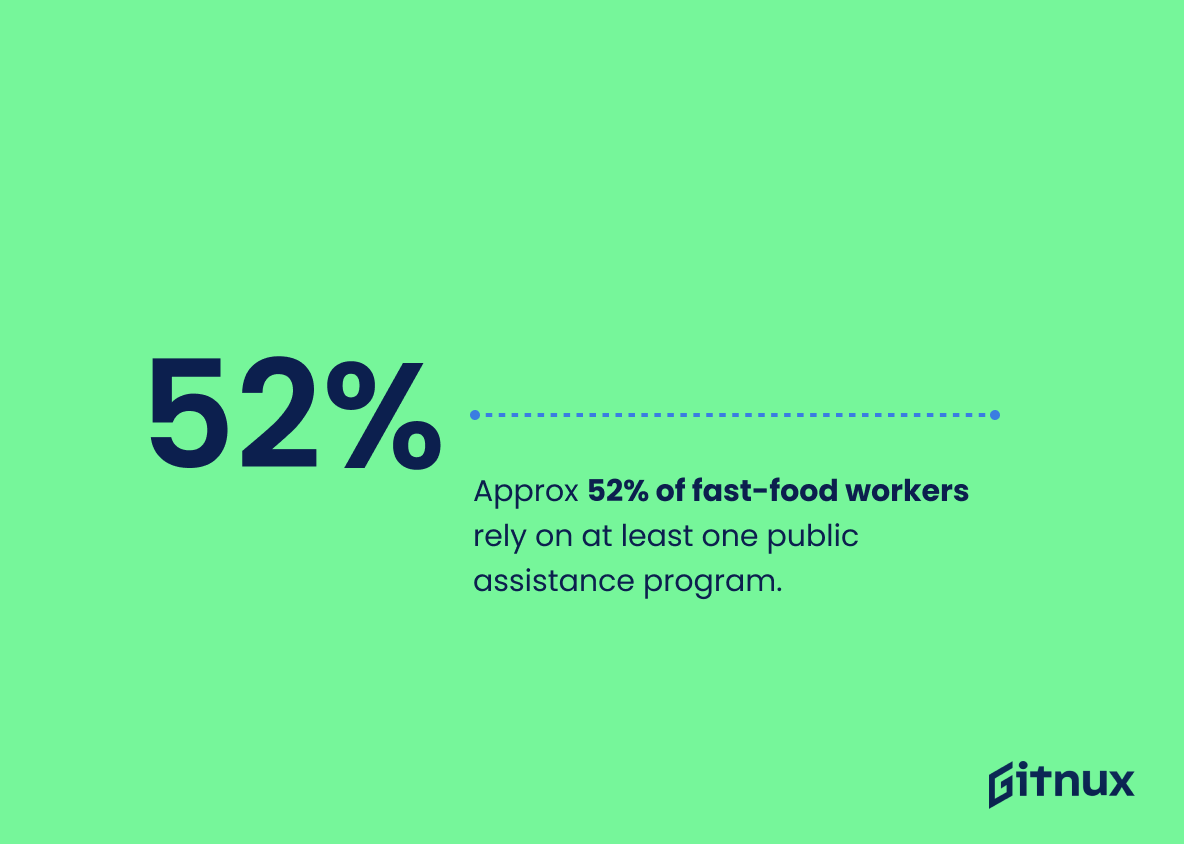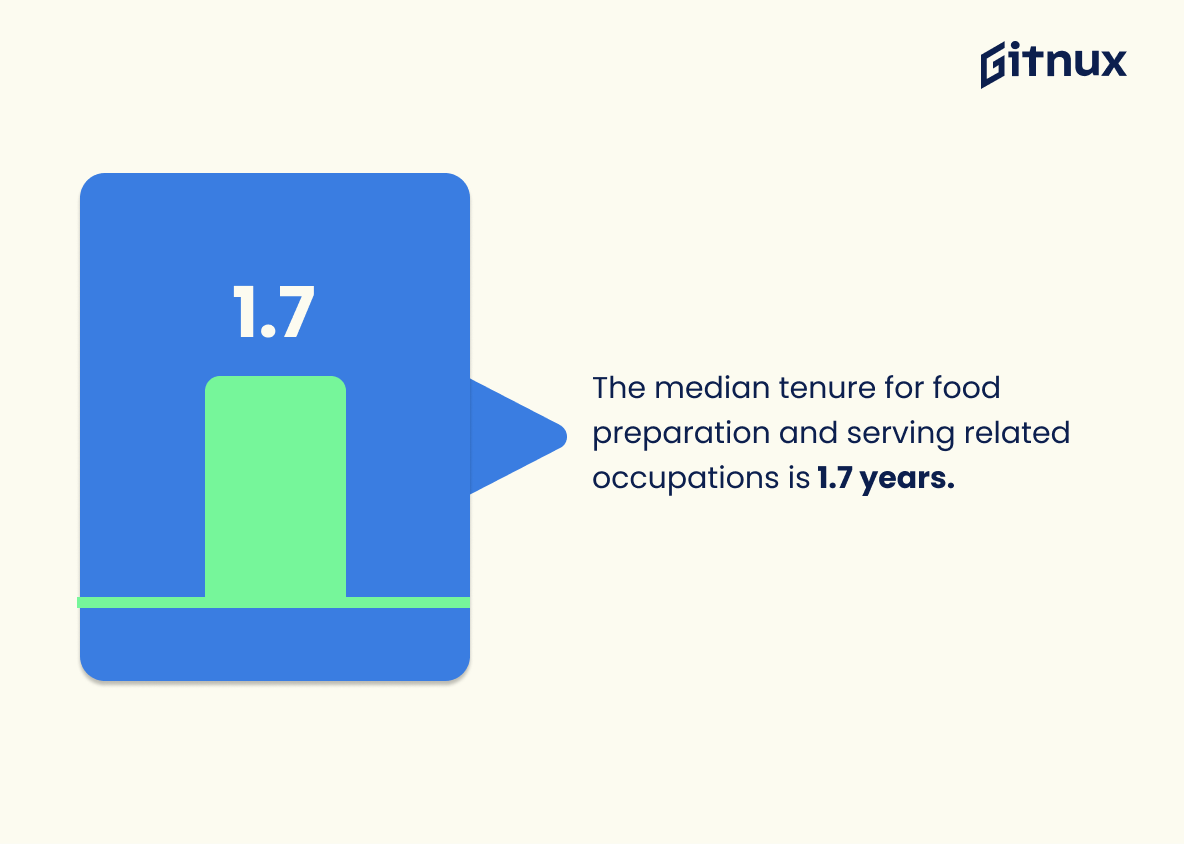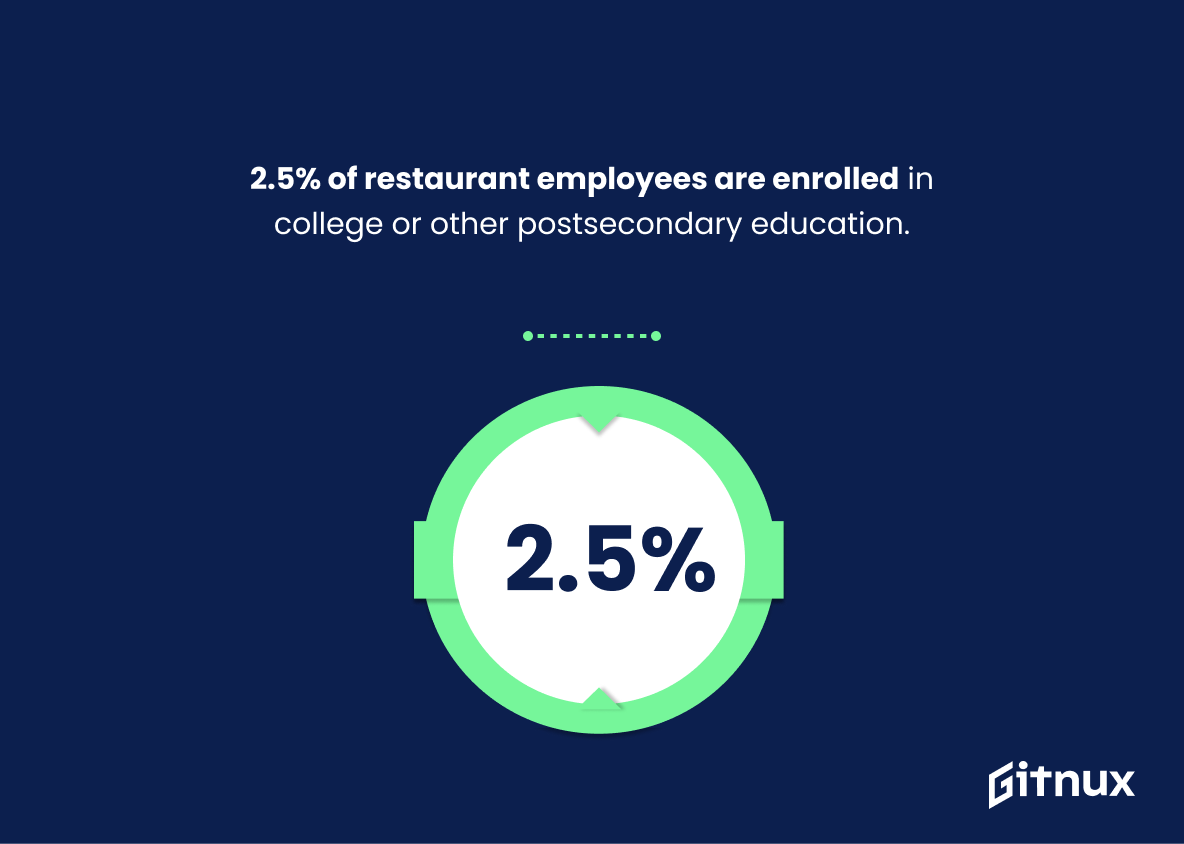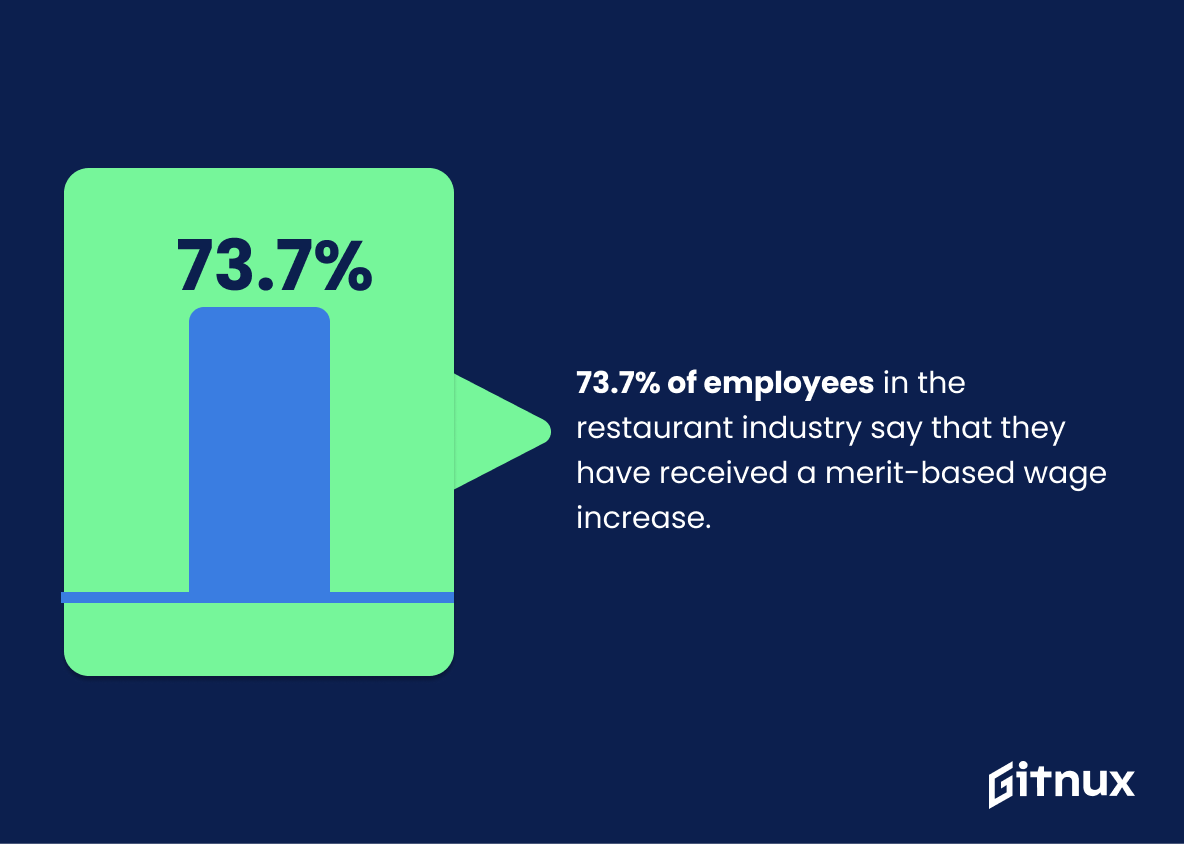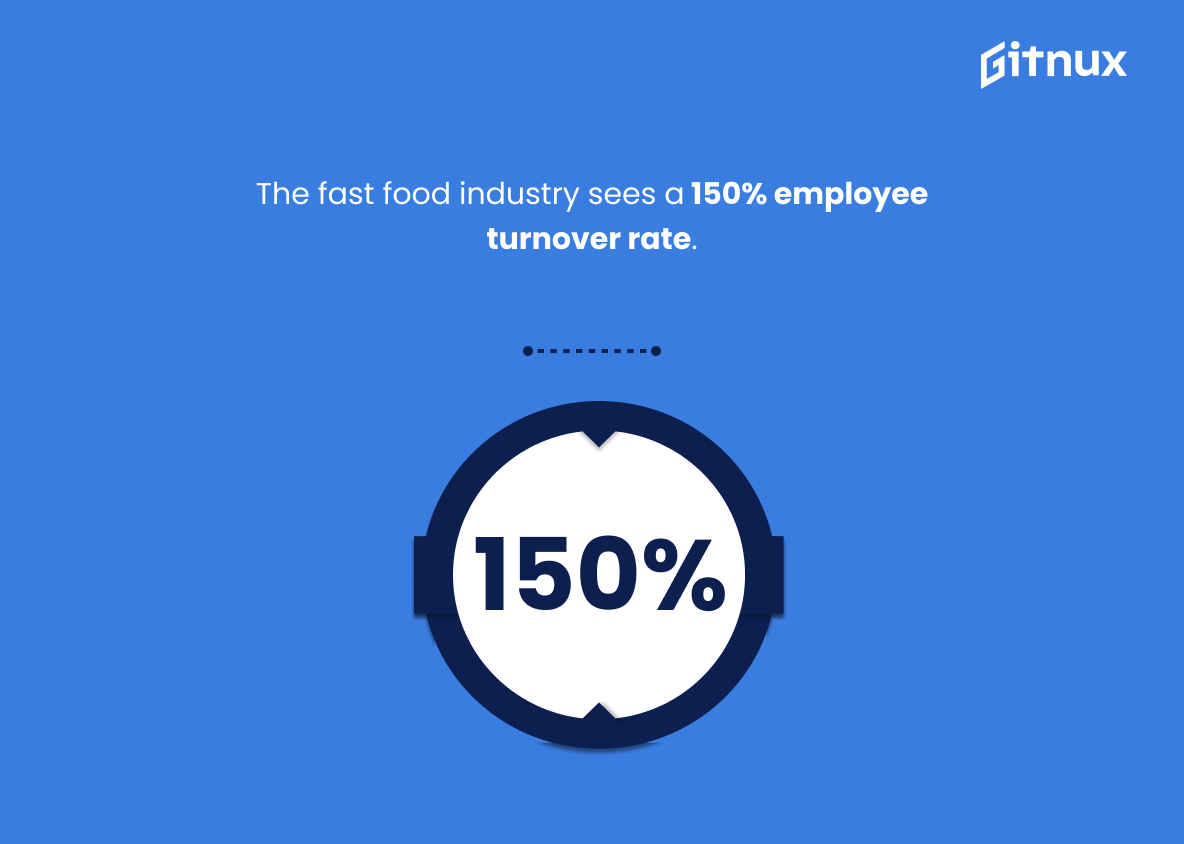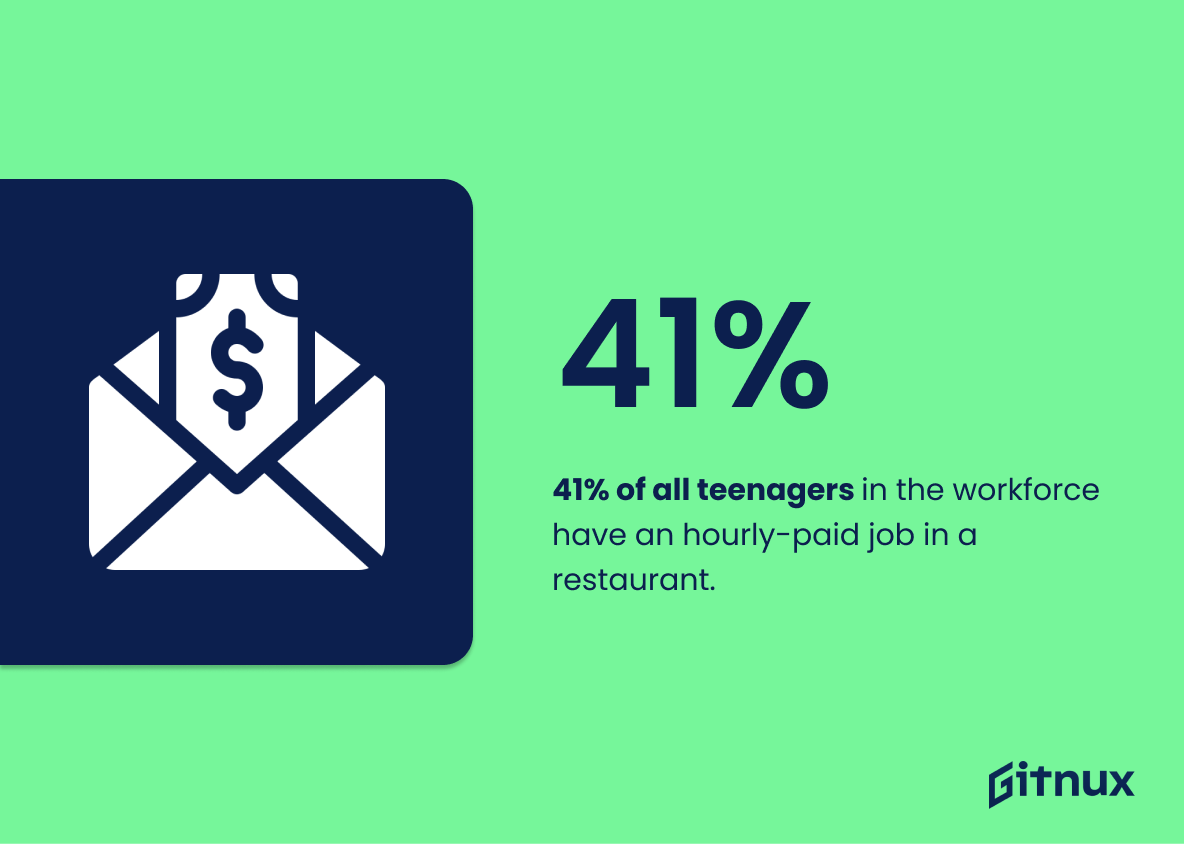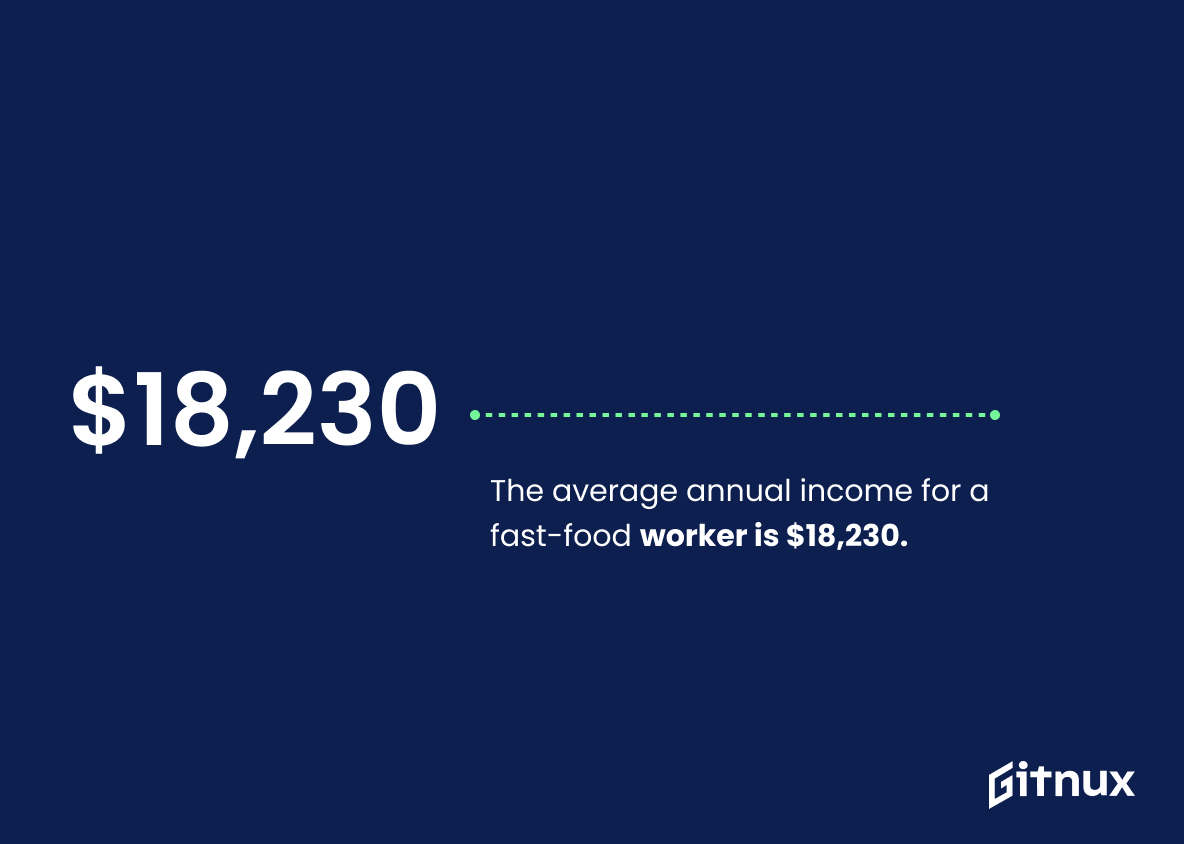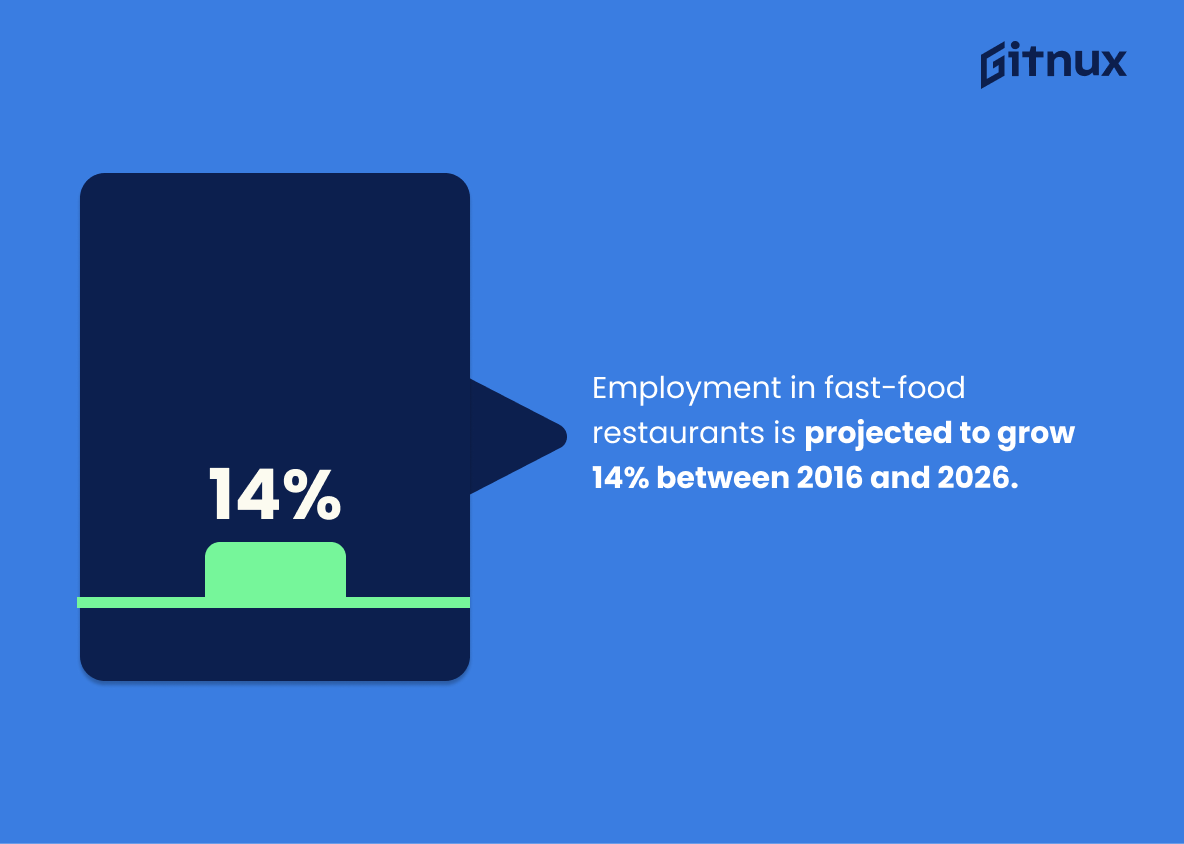Fast food employees are an integral part of the restaurant industry, making up nearly 30% of all restaurant workers. In 2021, there were over 3.8 million fast food employees in the United States alone and this number is projected to grow 14% by 2026. The average hourly wage for a fast-food worker is $10 or more per hour with 59.5% working at chained establishments and 40.5% employed at independently owned restaurants.
However, only 20 percent work full time while 32.8 percent work part-time and 15.5 percent are aged 16 to 19 years old – many of whom may be high school dropouts as approximately 30 percent have not completed their education beyond that level according to statistics from 2019/2020 data sources such as The Balance Careers, Bureau Of Labor Statistics (BLS), Quick Sprout & Restaurant Business Online among others . Additionally 52 % female make up most of these positions with median tenure being 1 year 7 months long on average; however 41 % teenagers hold jobs in service sector which includes Fast Food Restaurants too. Furthermore it has been observed that about 52 % rely on public assistance programs due to low wages whereas 73 % receive merit based wage increases annually but still face 150 turnover rate every year.
Fast Food Employee Statistics Overview
15.5% of all restaurant employees are aged 16 to 19.
This statistic is significant in the context of Fast Food Employee Statistics because it highlights the prevalence of young people in the restaurant industry. It is important to note that a large portion of the workforce is made up of teenagers, which can have implications for the wages and working conditions of these employees. Additionally, it is important to consider the impact that this statistic has on the overall economy, as young people are often the most vulnerable to exploitation and low wages.
Only 20% of fast food employees work full time.
This statistic is a telling indication of the reality that many fast food employees are not able to rely on their job for a steady, reliable income. With only 20% of employees working full time, the majority of fast food employees are likely struggling to make ends meet with part-time hours and wages.
Approx 52% of fast-food workers rely on at least one public assistance program.
This statistic is a stark reminder of the reality that many fast-food workers are struggling to make ends meet. It highlights the need for better wages and working conditions in the fast-food industry, as well as the need for more public assistance programs to help those who are struggling.
The median tenure for food preparation and serving related occupations is 1.7 years.
This statistic paints a vivid picture of the transient nature of food preparation and serving related occupations. It highlights the fact that these jobs are often short-term, with employees moving on to other opportunities after a relatively brief period of time. This is an important point to consider when discussing the overall landscape of fast food employee statistics.
2.5% of restaurant employees are enrolled in college or other postsecondary education.
This statistic is indicative of the fact that, despite the low wages and lack of benefits associated with fast food jobs, many employees are still striving to better their lives through education. It speaks to the resilience and ambition of fast food workers, and is an important reminder that these employees are more than just a statistic.
36.4% of total restaurant workforce comprises people who were born outside the United States.
This statistic is a telling indication of the diversity of the restaurant workforce. It speaks to the fact that a significant portion of the people employed in the restaurant industry are immigrants, highlighting the importance of this sector in providing employment opportunities to those from outside the United States. This is an important point to consider when discussing the fast food employee statistics, as it provides a unique perspective on the makeup of the workforce.
32.8% of restaurant employees work part-time.
This statistic is significant in the context of a blog post about Fast Food Employee Statistics because it highlights the prevalence of part-time work in the restaurant industry. It demonstrates that a large portion of restaurant employees are not able to rely on full-time employment, and may be struggling to make ends meet.
About 42% of all fast food employees have worked for the same place for at least two years.
This statistic is indicative of the fact that many fast food employees are staying in their positions for extended periods of time. This speaks to the stability of the industry and the loyalty of its employees, suggesting that fast food is a viable career option for those looking for long-term employment.
73.7% of employees in the restaurant industry say that they have received a merit-based wage increase.
This statistic is a testament to the fact that the restaurant industry is taking steps to reward hardworking employees with merit-based wage increases. It shows that the industry is recognizing the value of its employees and is willing to invest in them. This is an encouraging sign for those in the restaurant industry, as it indicates that their efforts are being appreciated and rewarded.
The fast food industry sees a 150% employee turnover rate.
The high employee turnover rate of 150% in the fast food industry is a telling statistic that speaks volumes about the state of the industry. It suggests that the industry is not providing employees with the necessary support and resources to stay in their positions, leading to a high rate of turnover. This statistic is an important indicator of the industry’s overall health and should be taken into consideration when discussing fast food employee statistics.
41% of all teenagers in the workforce have an hourly-paid job in a restaurant.
This statistic is a telling indication of the prevalence of restaurant jobs among teenagers in the workforce. It highlights the fact that a significant portion of young people are employed in the fast food industry, and thus provides an important insight into the current state of the sector.
16.4% of food preparation and food service workers are part of a union or covered by a union contract.
This statistic is significant in the context of Fast Food Employee Statistics because it highlights the importance of union representation for food preparation and food service workers. It demonstrates that a significant portion of these workers are able to benefit from the protections and benefits that come with union membership, such as higher wages, better working conditions, and job security. This statistic is a reminder that unions are an important part of the labor movement and can be a powerful tool for workers to fight for their rights.
The average annual income for a fast-food worker is $18,230.
This statistic serves as a stark reminder of the reality of the fast-food industry: that the average worker earns a meager annual income. It paints a vivid picture of the financial struggles that many fast-food employees face, and highlights the need for better wages and working conditions.
Employment in fast-food restaurants is projected to grow 14% between 2016 and 2026.
This statistic is a telling indication of the future of the fast-food industry. It suggests that the industry is expected to grow significantly over the next decade, providing more job opportunities for those looking to enter the field. This is an important factor to consider when discussing fast food employee statistics, as it provides insight into the potential for career growth and stability in the industry.
59.5% of fast-food employees work for chained establishments, while 40.5% work for independently owned restaurants.
This statistic is significant in the context of a blog post about Fast Food Employee Statistics because it provides insight into the prevalence of chain restaurants in the fast food industry. It reveals that the majority of fast food employees are employed by large, corporate establishments, while a smaller portion are employed by independently owned restaurants. This information can be used to draw conclusions about the impact of chain restaurants on the fast food industry, as well as the potential implications for employees.
Fast food employees make up 29.9% of the entire restaurant workforce.
This statistic is a telling indication of the prevalence of fast food restaurants in the restaurant industry. It demonstrates that a significant portion of the restaurant workforce is employed in the fast food sector, highlighting the importance of this sector in the restaurant industry.
Conclusion
The statistics presented in this blog post demonstrate the prevalence of fast food employees and their working conditions. The average hourly wage for a fast food worker is over $10, with an annual income of around $18,230. There are currently 3.8 million people employed in the industry, 15.5% of whom are aged 16 to 19 years old; only 20% work full time while 32.8% work part-time and 41% are teenagers who have taken on an hourly job at a restaurant or other establishment serving food and beverages.
Fast-food workers rely heavily on public assistance programs such as Medicaid and SNAP benefits due to low wages – 52%, according to one study – yet 73.7 percent report receiving merit-based wage increases from employers since 2016 when employment was projected to grow 14%. Additionally, 59.5 percent work for chained establishments while 40 .5 percent remain independent operators; they make up 29 .9 % of all restaurant employees nationwide with median tenure lasting 1 .7 years before moving onto another position or leaving the workforce altogether due to high turnover rates (150%). Finally, 16 .4 % belong to unions that provide additional protection against unfair labor practices like discrimination based on gender identity or race/ethnicity among others issues related directly or indirectly with workplace safety standards set by OSHA regulations which apply equally across all industries regardless size or type business operations conducted within US borders..
References
0. – https://www.restaurant.org
1. – https://www.restaurantbusinessonline.com
2. – https://www.bls.gov
3. – https://www.statista.com
4. – https://www.laborcenter.berkeley.edu
5. – https://www.businessinsider.com
6. – https://www.restaurant.org
7. – https://www.pewresearch.org
8. – https://www.thebalancecareers.com
